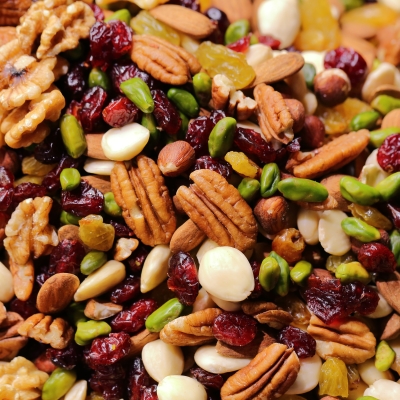The International Nut and Dried Fruit Council’s (INC) latest intervention study, published in the American Journal of Clinical Nutrition, shows that long-term mixed nut consumption significantly improves brain insulin sensitivity in older adults with overweight or obesity.
The study conducted by Maastricht University, The Netherlands, observed that the beneficial effects of the long-term consumption of nuts were evident in older adults with overweight or obesity and may be important for the prevention of age-related metabolic and cognitive diseases.
“Supported by growing scientific evidence, the effects of nut consumption are associated with a myriad of health benefits, from cardiovascular health to insulin resistance and diabetes, weight management, lipoproteins and dyslipidemia, inflammation and oxidation, gut health, aging and cognition, and some forms of cancer,” Goretti Guasch, executive director at INC, tells Nutrition Insight.
“More recently, other lines of research have included fertility and nuts and dried fruits as part of sustainable diets.”
Researchers established that nut consumption significantly improves the insulin action in the occipital and frontal brain regions responsible for modulating metabolic and cognitive processes. However, peripheral insulin sensitivity was not affected.
Controlling for nutty effects
Twenty-eight healthy men and women between 60–70 were selected for the trial, which consisted of a randomized, single-blinded, crossover study involving a 16-week intervention and control period with no nuts. The interventions were separated by an eight-week washout period.
“Based on these results, we have concluded that regional brain insulin resistance observed in older adults with overweight or obesity can be beneficially affected by a longer-term mixed nut intervention, which may be important for the prevention of age-related diseases,” says Dr. Peter Joris, associate professor, Physiology of Human Nutrition and principal investigator of the study.
The intervention consisted of 60 g of mixed nuts consumed daily — 15 g each of walnuts, pistachios, cashews and hazelnuts. Participants adhered to the Dutch dietary guidelines.
Cerebral blood flow (CBF) was quantified using magnetic resonance imaging, while the regional CBF responses to intranasal insulin were measured to assess brain insulin sensitivity. The researchers also assessed the effects of nut consumption on peripheral insulin sensitivity with an oral glucose tolerance test and intrahepatic lipid content and cardiometabolic risk markers.
“The benefits of nuts are wide-ranging and include a variety of nutrients, mono- and polyunsaturated fats, fiber, vitamins, minerals, polyphenols and antioxidants, all of which have a beneficial effect on health,” says Guasch.An INC study found that eating mixed nuts over time can improve brain insulin sensitivity.
Added benefits
Intrahepatic lipid content, serum low-density lipoproteins cholesterol and systolic blood pressure were lower following nut consumption compared to the control period. In addition, participants did not gain weight during the study.
“Scientific evidence supports that consuming the recommended daily allowance of a handful of nuts (28 g /1 oz) as part of a healthy diet may have a positive effect on the prevention of some diseases,” says Guasch.
Meanwhile, according to an extensive new study by the University of South Australia, an energy-restricted diet that prioritizes almonds can help people lose weight and improve their cardiometabolic health. Nuts are often overlooked in weight management strategies because they are high in fats. However, current research shows their benefits are manifold.
At the same time, the Forager AI platform identified 188 predicted bioactive and health-benefiting molecules in almonds. According to Brightseed, the newly discovered compounds could significantly impact mental wellness, immunity, metabolism and overall health. The findings are set to expand almonds’ uses across F&B, food supplements and beyond mere snacking.

